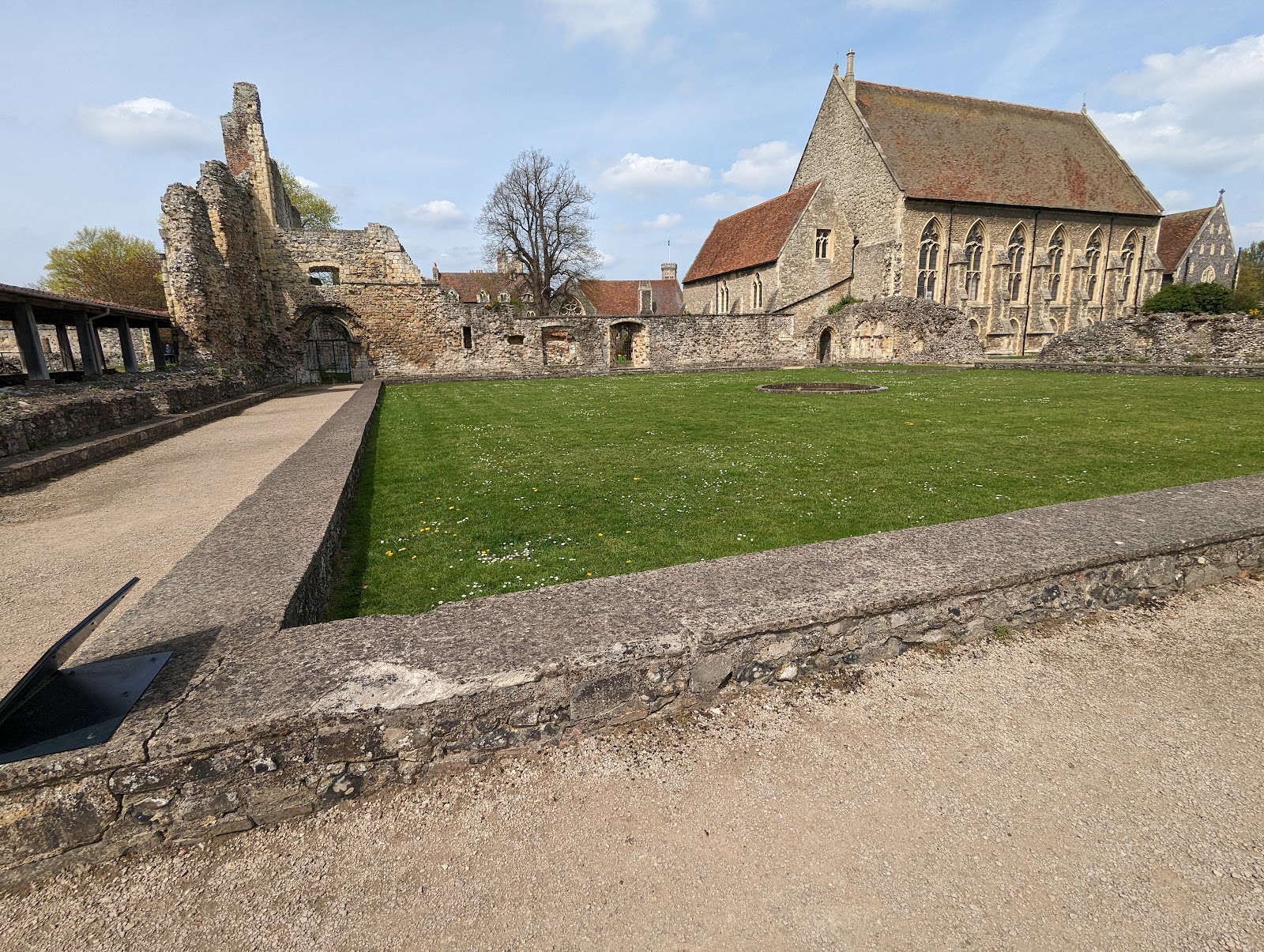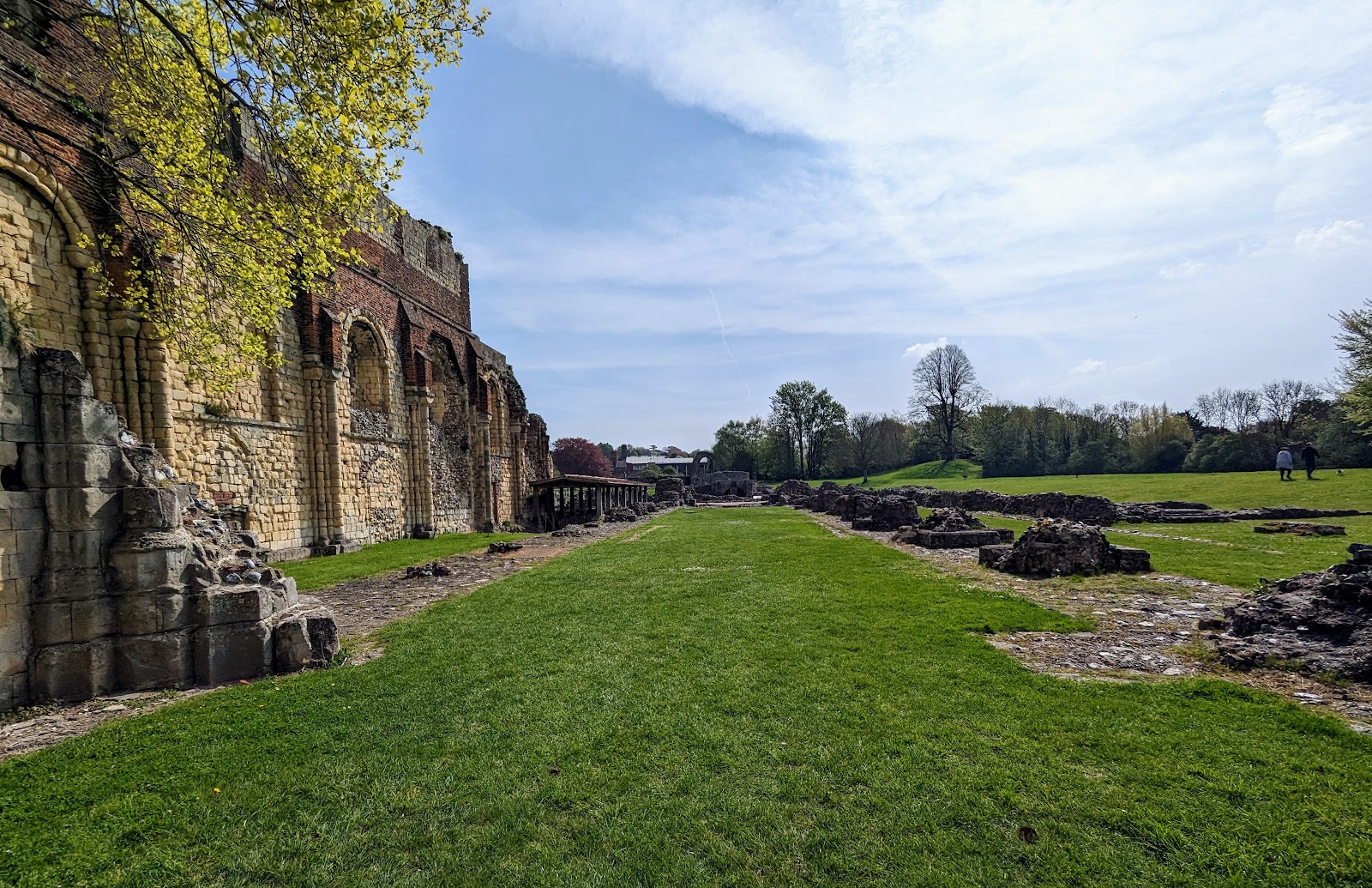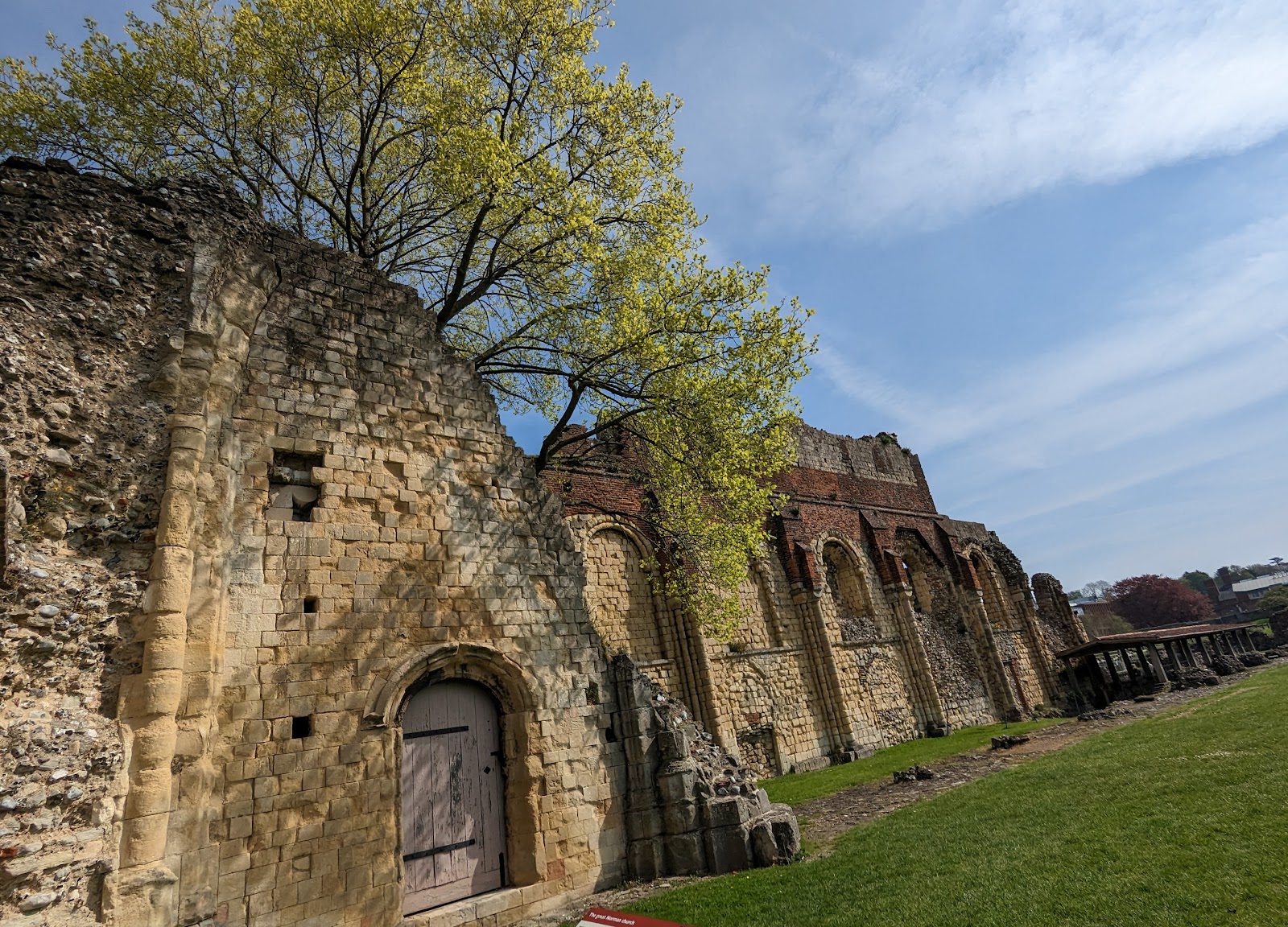Walking the grounds of the ancient St Augustine's Abbey makes English history come alive thanks to the preservation of these historic structures and an onsite museum.
St Augustine's Abbey is part of the World Heritage site, which includes St Martin's Church and Canterbury Cathedral.
A short video clip showing the grounds of St Augustine's Abbey.
The Romans brought Christianity to Britain but the local Anglos-Saxon tribes worshipped other gods. According to the storyboards at St Augustine's Abbey, Pope Gregory I was influenced to send Augustine to England when he saw the plight of pagan English children sold in a slave market. Augustine arrived in 597.
Augustine was received by Queen Bertha who was a Christian and worshipping at nearby St Martin's church. She appears to have encouraged her husband, King Ethelbert, to donate the land, which became the first monastic site now known as St Augustine's Abbey. He also supported St Martin's church where St Augustine began his missionary efforts and provided the land for Canterbury Cathedral.
Following the Norman invasion of 1066, the abbey was modified in the Norman style. A wall and outline remains.
 |
| The Crypt |
 |
| Outline of dining hall site St Augustine's Abbey 2023 Geoffrey Sutton/ suttong.com |
 |
| Cloister and Scriptorium site St Augustine's Abbey 2023 Geoffrey Sutton/ suttong.com |
 |
| Lady chapel and crypt St Augustine's Abbey 2023 Geoffrey Sutton/ suttong.com |
The experience is enhanced by a museum containing a history of the site on illustrated storyboards and some archaeological discoveries.

Please check out my website www.suttong.com
and see my books on AMAZON or GOOGLE STORE
Also, consider connecting with me on FACEBOOK Geoff W. Sutton
TWITTER @Geoff.W.Sutton
Related sites
St Martin's Church - England oldest active church
A resource book on Canterbury













.jpg)

























.jpg)






